Uganda is known as the “Pearl of Africa” not just for the breath-taking landscapes and rich wildlife but also for its incredibly diverse culinary scene.
Food plays a central role in Uganda’s culture, offering visitors a chance to experience the country’s traditions through unique flavours and cooking methods. From hearty traditional dishes to the abundance of fresh tropical fruits, Uganda has something delicious to offer every traveller.

This article serves to inspire you to take on a culinary adventure of the various parts and aspects of Uganda. Whether you are visiting for gorillas, safari wildlife or any of the various attractions, Uganda's food is something worth exploring.
Here’s a guide to some of the must-try foods and fruits when visiting Uganda.
Traditional Ugandan Dishes
Ugandan cuisine revolves around staple foods like plantains, maize, and root vegetables, often served with rich sauces or stews. The country’s dishes are known for their simplicity, allowing the natural flavours of local ingredients to shine through.
Here are some of the traditional dishes that every visitor should try.
PLEASE NOTE: if you have any dietary restrictions, make sure you consider them before trying some foods especially those with meats and diary. There are many options that no matter your restrictions, you will still get great tasty options to try out while visiting Uganda.
1. Luwombo
Luwombo is one of the most cherished dishes in Uganda, with roots tracing back to the royal kitchens of the Buganda Kingdom.
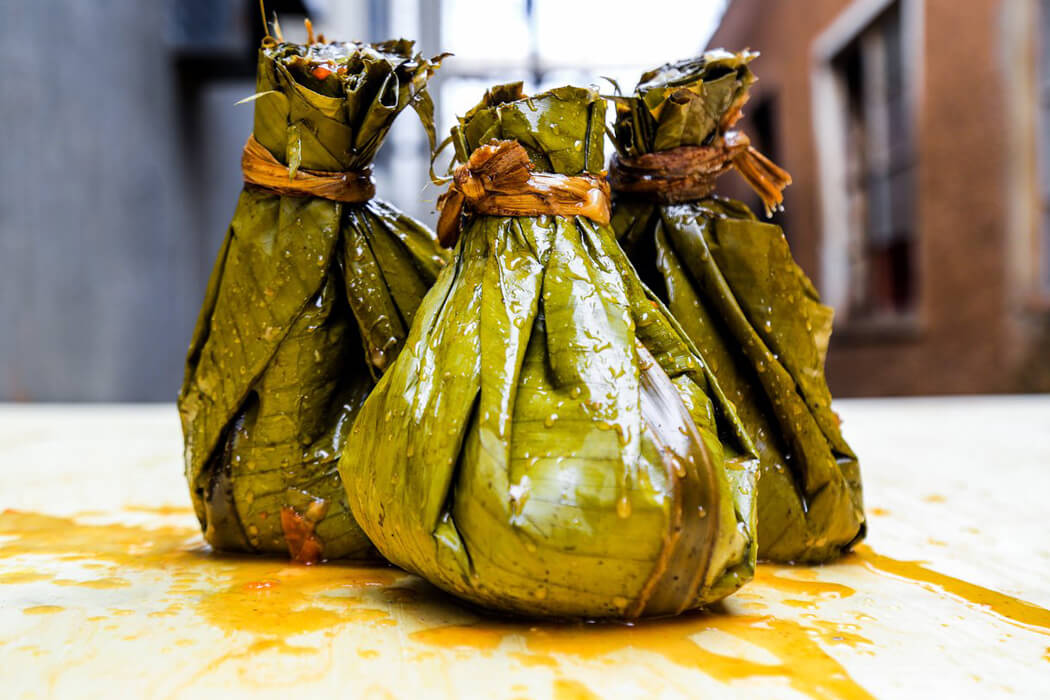
This dish is essentially a stew, but what makes it unique is its preparation method. Chicken, beef, or groundnut sauce is wrapped in banana leaves and slowly steamed over a fire, giving the stew a distinctive smoky flavour.
The banana leaves keep the meat tender, allowing it to absorb the rich blend of spices used in the marinade.
Unwrapping the leaves to reveal the perfectly cooked stew inside is a special moment, a ritual that makes Luwombo more than just a meal - but an experience. Luwombo is typically served with matoke, rice, or sweet potatoes, and is best enjoyed during cultural events - especially traditional weddings.
2. Matoke
Matoke is the quintessential Ugandan dish and a staple food for many families. It is made from green bananas that are peeled, wrapped in banana leaves, and steamed until they become soft. The cooked bananas are then mashed to a smooth, buttery consistency.
Matoke is often served alongside rich sauces, such as groundnut or beef stew.
What makes matoke special is its subtle flavour, which pairs perfectly with the richer, spicier side dishes. Matoke is not just a daily meal—it’s a food with deep cultural significance, especially in central Uganda.
For the best experience, try matoke prepared in a traditional home setting or at a local restaurant known for home-style cooking.
3. Rolex

Rolex is Uganda’s most famous street food and a must-try for anyone visiting the country.
Contrary to what the name might suggest, it has nothing to do with the swiss luxury watches. Instead, the name is a playful shortening of "rolled eggs," which is exactly what a rolex is - a chapati rolled up with an omelette.
The omelette usually includes tomatoes, onions, and cabbage, and some vendors add a bit of spice to give it a kick. The chapati is grilled on a flat iron skillet, and as soon as the omelette is cooked, it’s placed on top, rolled up, and served hot. The simplicity of a Rolex is part of its charm—it’s quick, filling, and cheap, making it the perfect snack or light meal.
You’ll find chapati and rolex stalls in all Ugandan towns, and the experience of watching it made fresh right in front of you is just as enjoyable as eating it.
4. Posho
Posho, known in other parts of East Africa as "ugali," is made from maize (corn) flour cooked with water until it reaches a thick, dough-like consistency. It’s served as a side dish to accompany various stews and sauces.
Posho itself has a mild flavour, which makes it the ideal base for soaking up the rich, spicy flavours of beef, fish, or vegetable stews. It is especially common in schools, homes, and rural areas where maize is plentiful, providing a filling and energy-rich meal. Many Ugandans have a nostalgic connection to posho, as it’s a dish they grew up eating.
While your safari lodge can make you great posho, if you want a full experience, have visiting a small local foods restaurant on your itinerary.
5. Groundnut Sauce
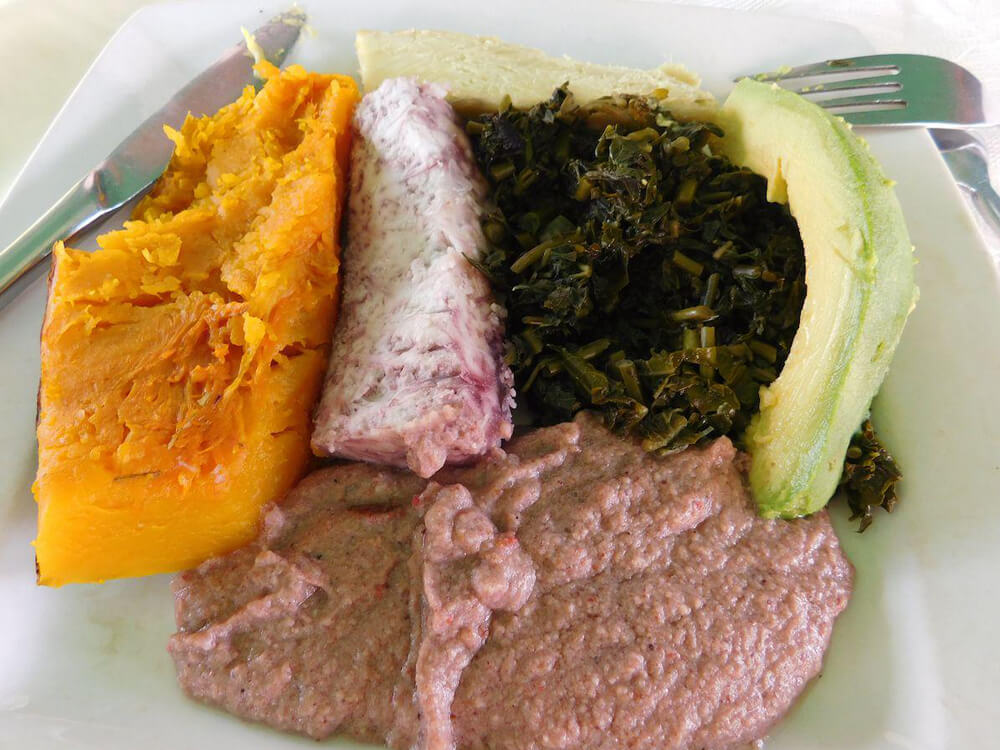
Groundnut sauce, known locally as ebinyebwa, is a rich and creamy dish made from ground peanuts.
The peanuts are pounded or blended into a paste, which is then cooked with water, onions, and a touch of salt. The result is a thick, velvety sauce that pairs wonderfully with matoke, rice, or sweet potatoes.
Binyebwa is a versatile dish that can be made with a variety of other dishes, such as chicken or fish, making it a popular choice for both vegetarians and meat-eaters. Groundnut sauce is a household favourite across Uganda and can be found in local restaurants and is ever present at all kinds of events and functions. It’s a comforting dish that offers a taste of everyday Ugandan home-cooked meals.
6. Muchomo
Muchomo is Uganda’s version of barbecued meat, and it’s a favourite at gatherings and roadside grills. The name comes from the Swahili word for “roasted,” and muchomo can be made from various types of meat, including chicken, beef, goat, and pork.

The meat is marinated with spices and grilled over an open flame until it’s perfectly charred on the outside while remaining juicy on the inside. The smoky aroma of muchomo is enough to draw in passers-by, and it’s best enjoyed hot off the grill with a side of fried cassava or a cold drink.
In Uganda, you’ll find muchomo sold in bustling markets, by the roadside, or during community events. It’s a social food, meant to be shared with friends while enjoying a lively atmosphere.
7. Malewa
Malewa is a traditional dish from Eastern Uganda, specifically among the Bagisu people. It is made from dried and smoked bamboo shoots, which are then rehydrated and cooked in stews or with groundnut sauce.
The bamboo shoots add a unique, earthy flavour to the dishes they accompany, making malewa a distinctive regional specialty. Preparing malewa requires time and patience, as the shoots must be carefully rehydrated and cooked to achieve the right texture.
It’s a dish that tells a story of heritage and tradition, especially during ceremonies in the Bagisu region. If you want to try malewa, the best place is in the Eastern town of Mbale, where the locals prepare it with expertise.
8. Katogo
Katogo is a one-pot dish that combines matoke with a protein source like beef, offal, vegetables or beans. The ingredients are cooked together until they blend into a rich, hearty stew.
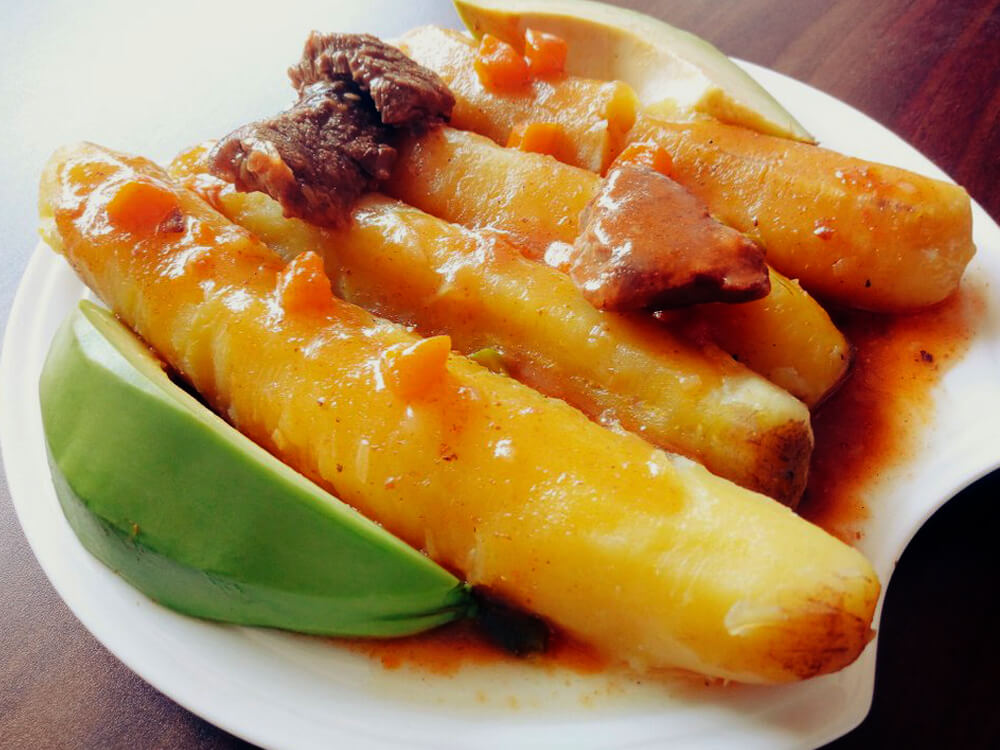
It’s a popular breakfast meal, especially in rural areas, providing a nutritious start to the day. The word “katogo” means “mixed up,” which reflects the nature of the dish - different ingredients cooked together for a wholesome and balanced flavour.
Katogo is very filling and regarded as the best kind of breakfast for people heading to work - whether that is farmers in the village or the city dwellers going to office. Many restaurants in Uganda serve katogo as part of the breakfast menu, but others serve it all day.
9. Nsenene
Nsenene, or grasshoppers, are a seasonal delicacy in Uganda, especially enjoyed during the rainy seasons of May and November.
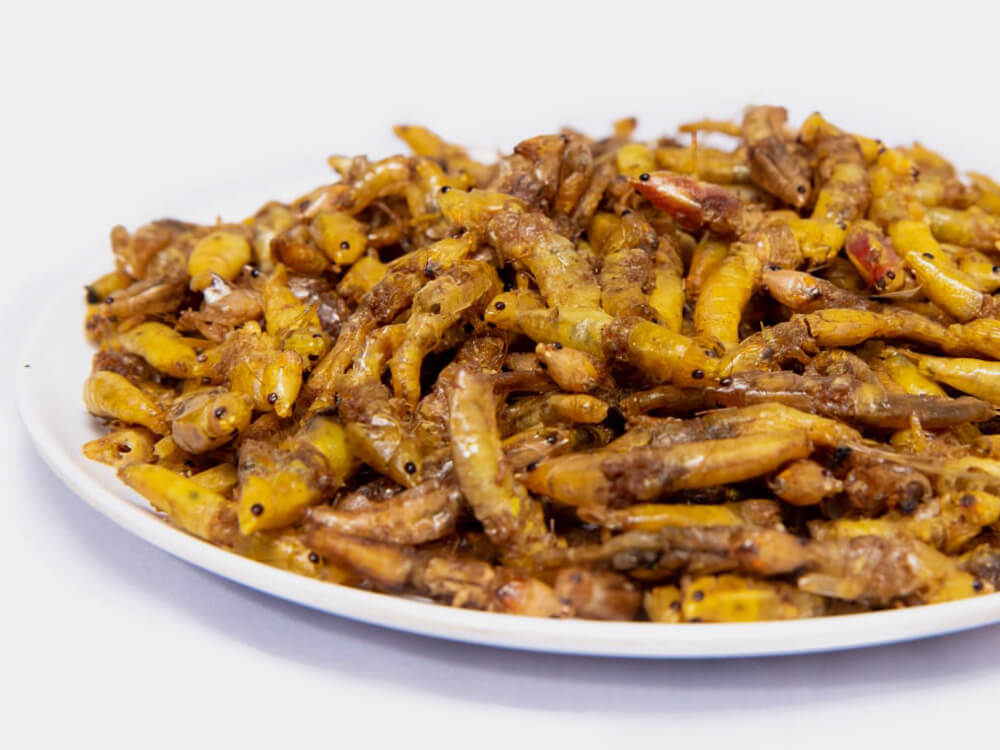
When the grasshoppers swarm, locals harvest them in large quantities and fry them with a bit of salt until they become crispy. Despite their unconventional nature, nsenene have a nutty flavour and a crunchy texture that make them a favourite snack among locals.
For adventurous travellers, tasting nsenene is a chance to experience a truly Ugandan delicacy. They’re often sold in paper cones at markets or by roadside vendors, offering a unique and protein-packed snack on the go.
While some groups of Ugandans don't eat nsenene due to cultural taboos, everyone else enjoys them and it is rare that a season will pass without tasting these sweet insects.
10. Kalo
Kalo, or millet bread, is a staple in Western Uganda, made from millet flour that is mixed with water and steamed to form a dense, dough-like consistency. The result is a slightly earthy, hearty bread that pairs well with sauces like meat stew, beans or vegetables.
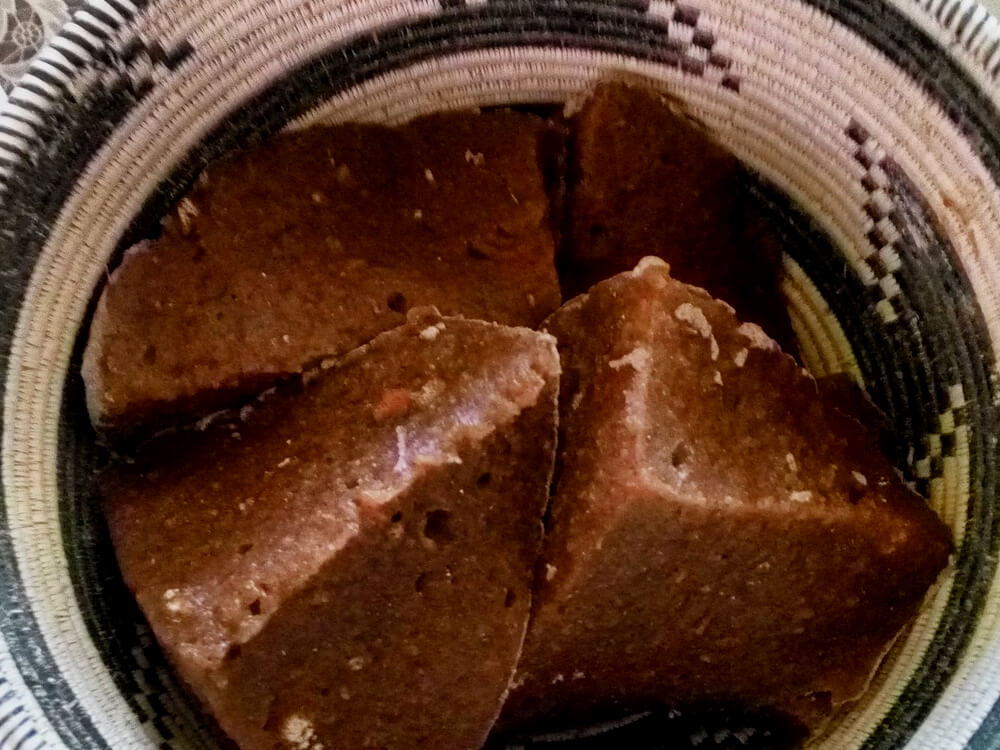
Millet is a traditional grain that has been cultivated in Uganda for centuries, and it’s known for its nutritional benefits, being rich in fibre and minerals. Kalo is especially popular among the Banyankole people, who value it as an important part of their diet and heritage.
When visiting the western regions of Uganda, trying kalo is a great way to experience the local culture and traditional foodways.
Beyond Kalo, millet is used for making a light porridge (kitiribita) which was the traditional drink for hydrations at home and events - back before sodas and other soft drinks.
11. Tropical Fruits of Uganda
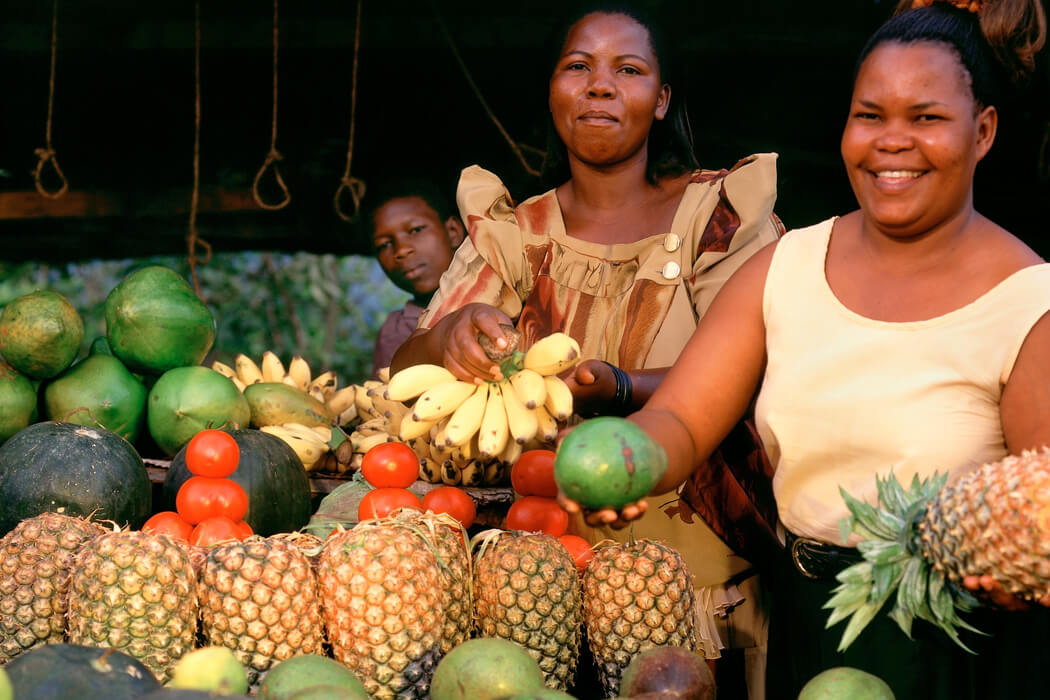
Uganda’s warm, tropical climate and fertile soil make it a paradise for fruit trees to thrive. Throughout the year, travellers can find an abundance of fresh fruits in markets, on street corners, and even in the backyard of local homes.
In Uganda, fruits are a vital part of the regular diet, and they are so delicious that people don't think about the with a lens of "healthy eating". They provide refreshing snacks, are rich in vitamins, and add a sweet touch to any meal.
Here’s a look at some of the most popular fruits you’ll find when visiting Uganda.
| Fruit | Description | When in season |
|---|---|---|
| Jackfruit (Fene) | Massive, spiky fruit with sweet flesh, tasting like a mix of pineapple and banana. | Year-round |
| Pineapple | Extra sweet and juicy, known for being more flavorful than other varieties. | Year-round, especially March-May |
| Mangoes | Different varieties ranging from sweet to slightly tangy. | November-January, June-August |
| Passion Fruit | Tangy and sweet pulp, often used for juices or eaten fresh. | Year-round |
| Bananas | Various types including dessert bananas (ndiizi) and roasted plantains (gonja). | Year-round |
| Papaya (Pawpaw) | Sweet, orange flesh, often eaten for breakfast or in salads. | Year-round |
| Avocado | Large and creamy, often eaten as a side or snack. | Year-round |
| Guava | Fragrant with a sweet taste, commonly eaten fresh or as juice. | Year-round |
| Watermelon | Sweet and refreshing, perfect for hot weather. | December-March |
| Soursop | Slightly tart with creamy white flesh, often used for juices. | Year-round |
| Oranges, Lemons & Tangerines | Sweet and refreshing, widely available. | March-May, November-January |
Closing Thoughts
Uganda’s cuisine offers visitors a window into the country’s rich traditions. By trying some of these local dishes, you not only get to connect with the people and foods that make Uganda magical, but you enjoy the same nourishment.
Whether it is enjoying a street rolex served in a paper parcel, or attending a traditional function for foods like Eshabwe or Luwombo, Uganda's food is tasty, and tells a story. As you think about visiting Uganda, think about food as your other adventure. Wherever you go, try some of the local food of that area.
So, when you visit Uganda, don’t just explore the landscapes - explore the flavours, and take a delicious journey through the heart of East Africa.
